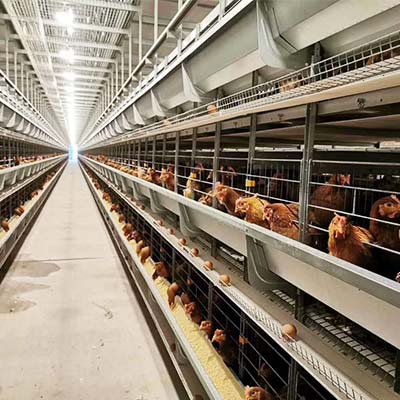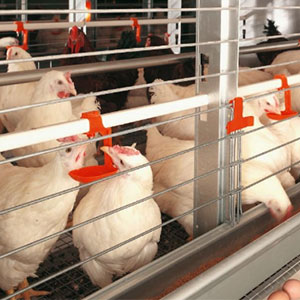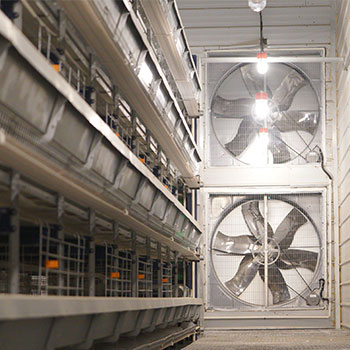How to help poultry get more nutrition?
- Published in Measures to reduce the mortality of laying hens
The feeding mode of modern poultry raising chickens is the raising of layers and broilers with automatic poultry farming equipment. Chickens live in battery chicken cages, and the main source of nutrition is feed. So how to improve the nutritional level of feed, ensure the source of nutrition for chickens, and ensure growth?

(1) Increase the nutrient concentration of the feed. 1-3% oil can be added to feed to improve feed energy level, increase feed intake and improve feed utilization.
(2) Improve amino acid levels. 0.1-0.15% methionine and 0.05% lysine can be added to reduce calorie consumption.
(3) Adjust feeding calcium and phosphorus levels. Calcium can be increased to 4%, so that the calcium-to-phosphorus ratio is about 7:1, and the quality of eggshells can be obtained.
(4) Increase your vitamin dose. Vitamin C, vitamin E, B vitamins are the main supplements and can be adjusted to twice the normal amount.
(5) Add anti-heat stress additives. Adding 0.01-0.04% vitamin C or 0.3% citric acid or 0.3% sodium bicarbonate to drinking water can relieve heat stress and have a good effect on improving egg production rate and reducing egg breaking rate.
The above is the use of the battery chicken cage system shared by poultry equipment manufacturers to supplement the nutrition for poultry through the above four methods. It is hoped that the above sharing can be of reference for poultry farmers to raise chickens.








